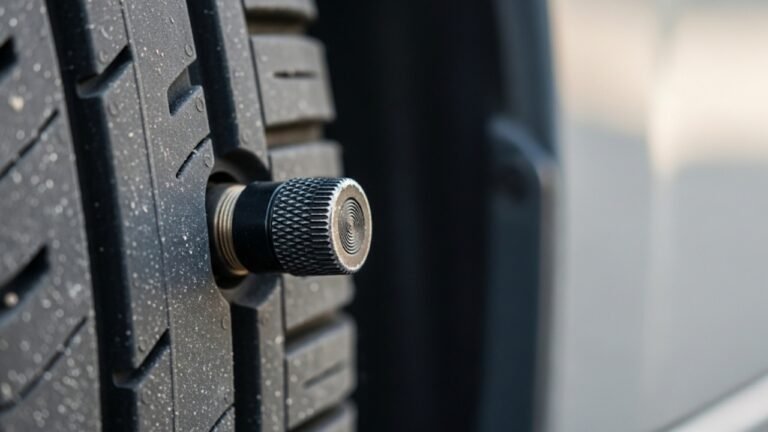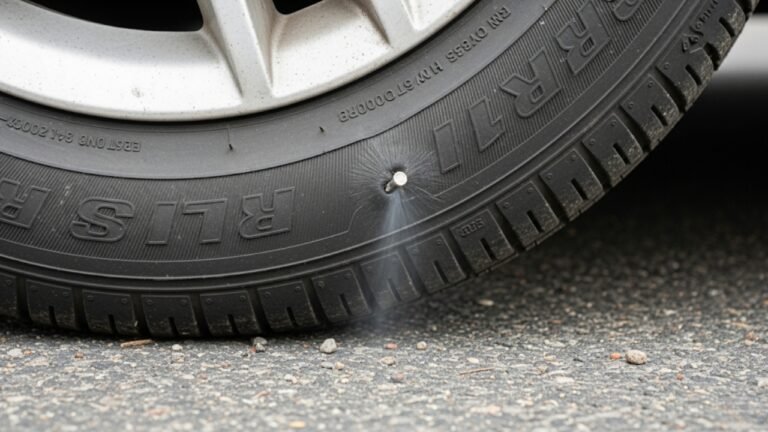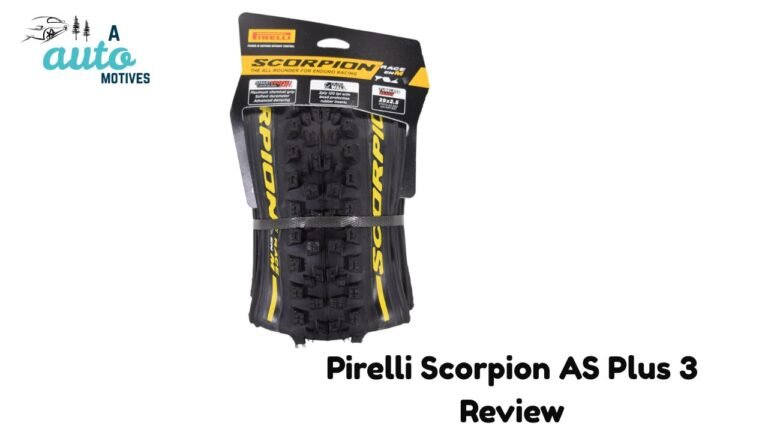The Real Truth About 245/55r16 Tires
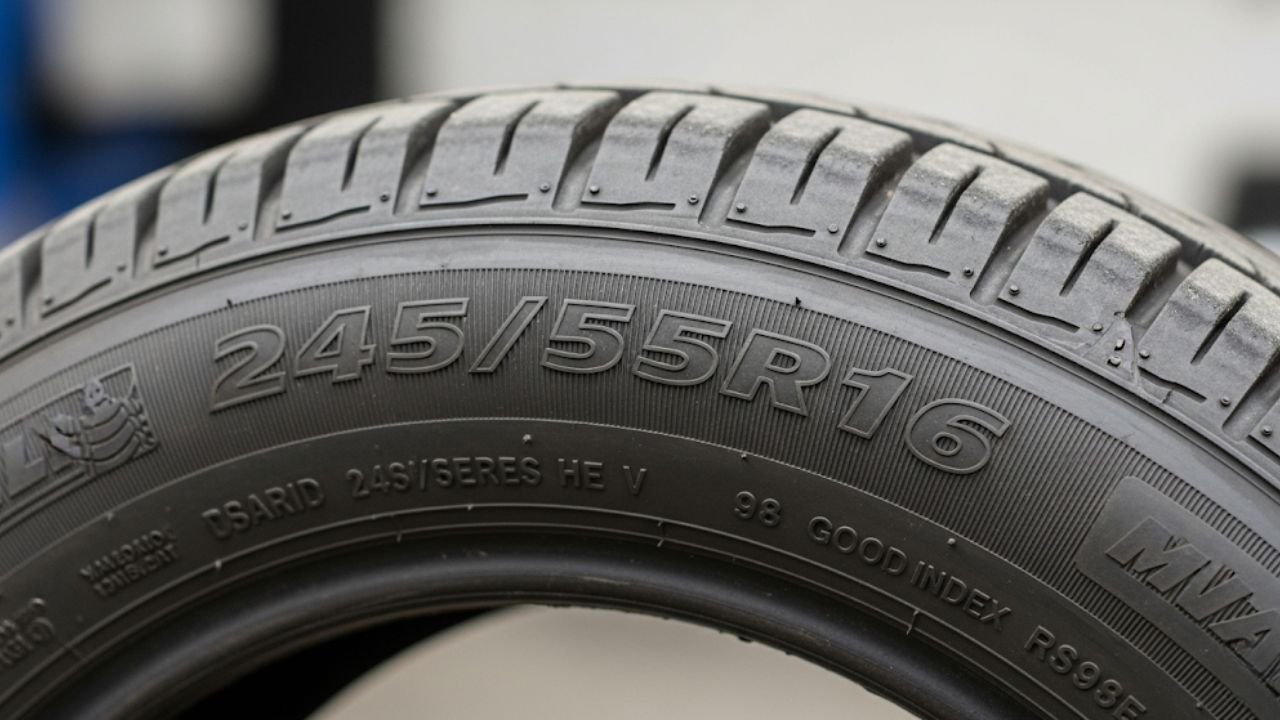
I remember the day I stood at the local garage, scratching my head. My mechanic handed me a paper with “245/55r16” scribbled on it. It looked like a math equation or some kind of code. “That’s your tire size,” he said casually, as if I was supposed to know what it meant.
You’ve probably been there too. Maybe your tire sidewall cracked. Maybe your steering felt off. Or maybe, like me, you just wanted better grip in the rain. Either way, tire sizes like 245/55r16 carry a lot of weight—literally and figuratively.
In this guide, we’ll decode that mysterious number, one section at a time. We’ll chat about what makes 245/55r16 tires unique, what vehicles they fit, how they ride, and what to watch for. Think of this as a friendly talk, not a lecture. Ready?
Breaking Down the Numbers: What Does 245/55r16 Really Mean?
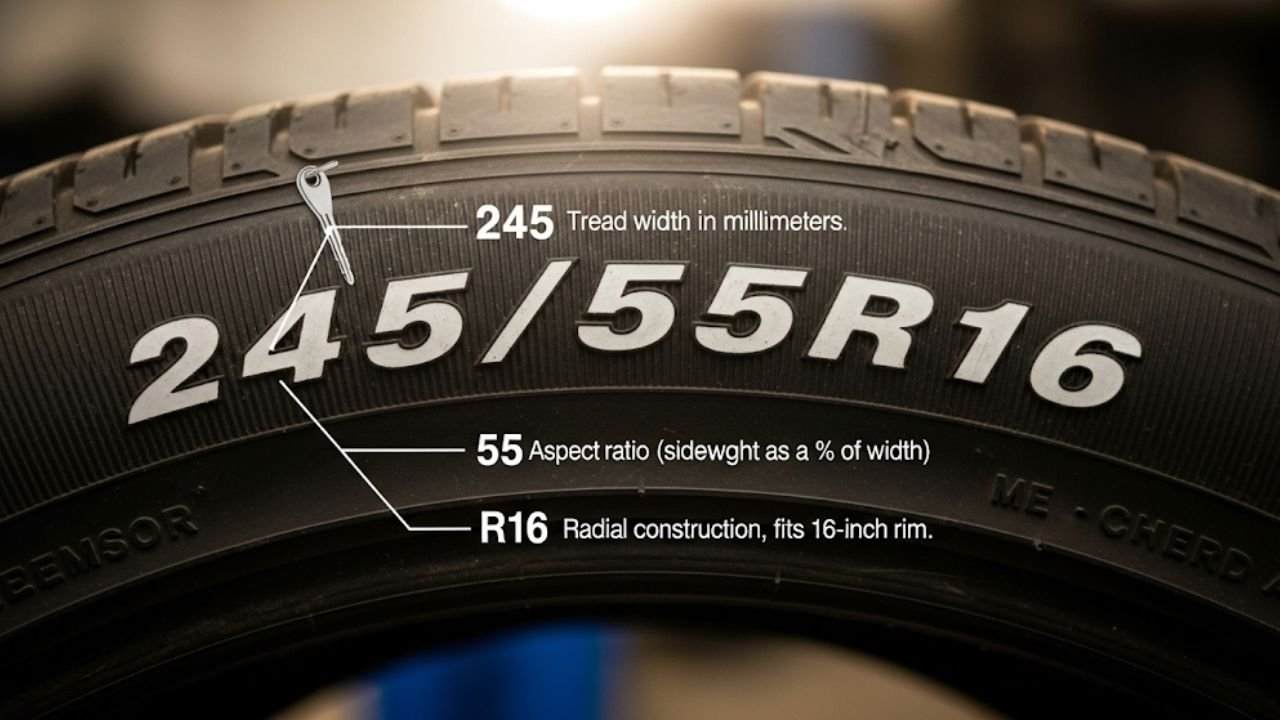
-
245 – This is the tire width in millimeters. It means your tire is 245mm from sidewall to sidewall.
-
55 – This is the aspect ratio. It’s the height of the sidewall as a percentage of the width. So 55% of 245mm = 134.75mm.
-
R – This stands for Radial construction, which is standard in modern tires.
-
16 – This is the rim diameter, in inches. So this tire fits on a 16-inch wheel.
Here’s a simple table to help you visualize:
| Tire Code | Meaning |
|---|---|
| 245 | Width of the tire in mm |
| 55 | Sidewall height is 55% of 245mm |
| R | Radial construction |
| 16 | Fits a 16-inch diameter rim |
Once you understand it, 245/55r16 becomes more than a number. It becomes a blueprint for grip, ride comfort, fuel economy, and safety. This isn’t just a tire size—it’s a statement.
Why the 245/55r16 Tire Size Is Popular With Drivers
Let me tell you something I learned the hard way. Tire size isn’t just about fit—it’s about feel. When I switched to 245/55r16, the difference was real. The ride softened. The cornering felt stable. My car seemed quieter on the highway.
So why do drivers and manufacturers love this size?
-
Balance of width and profile: The 245mm width gives you good contact with the road, while the 55% aspect ratio offers decent cushioning.
-
16-inch rims are common: Many sedans, minivans, and older SUVs use 16-inch wheels, making this a go-to choice.
-
Better control: A wider tire usually offers better grip, which means improved braking and handling.
Plus, the 245/55r16 strikes a rare balance—comfort without sacrificing performance. It’s like wearing running shoes that still look classy enough for dinner.
What Vehicles Commonly Use 245/55r16 Tires?
I remember borrowing my cousin’s old 2005 Chrysler 300 and thinking, “Wow, this thing glides.” No surprise—it had 245/55r16 tires. This size is common on certain sedans and crossovers that prioritize ride quality.
Here are some vehicles that typically use 245/55r16 tires:
-
Chrysler 300 (early 2000s models)
-
Ford Crown Victoria
-
Mercury Grand Marquis
-
Some models of Buick LeSabre and Park Avenue
-
Lincoln Town Car
If you’ve ever driven one of these, you’ll know that the ride feels plush, like floating on a cloud. That’s partly because of the tire’s size and design.
But don’t assume all 16-inch wheels are the same. Always check your vehicle’s manual or tire placard inside the door. A mismatched size can mess up your speedometer and affect braking.
Comfort vs. Performance: What You’re Getting with 245/55r16
Have you ever driven a car that felt too “bouncy” on bumps? Or one where you could feel every rock under the tire? That’s where 245/55r16 comes in.
The 55 aspect ratio means you’re getting a little more sidewall than a low-profile tire. That extra rubber acts like a built-in shock absorber. It smooths out potholes. It takes the edge off cracks in the road.
But here’s the sweet spot: the 245mm width still keeps you planted. That means:
-
Stable cornering
-
Better wet traction
-
Less sidewall flex than higher-profile tires
Let’s break it down further:
| Feature | What 245/55r16 Offers |
|---|---|
| Ride Comfort | Excellent—absorbs road imperfections |
| Handling | Good grip thanks to wide footprint |
| Noise Level | Typically quieter than low-profile tires |
| Fuel Efficiency | Moderate, but better than super-wide tires |
| Tread Life | Depends on driving style and brand |
In short, 245/55r16 tires are the Goldilocks option—not too harsh, not too mushy. Just right.
What Are the Best Tire Brands That Offer 245/55r16?
Okay, so you’ve decided that 245/55r16 is your size. But which brand should you trust?
This is where personal experience matters. I’ve tried budget tires that sounded like a drum set on the highway. I’ve also shelled out for premium tires that hugged the road like they were in love.
Here are a few solid options I’d recommend:
-
Michelin Defender T+H – Long-lasting, super quiet, and all-season reliable.
-
Goodyear Assurance MaxLife – Great tread life and comfort.
-
Hankook Kinergy ST – A solid budget option without too much compromise.
-
Continental TrueContact Tour – Excellent wet traction and stability.
-
Cooper CS5 Grand Touring – Smooth ride and confident handling.
A quick tip: Always match your driving style to your tire. If you do a lot of highway miles, go for comfort and tread life. If you drive aggressively or in wet climates, focus on grip and braking.
Tread Patterns Matter: What to Look for in 245/55r16 Tires
Picture this: you’re driving on a wet road after a heavy downpour. Your tires slice through puddles, and you feel secure, not sliding around. That’s not luck—it’s your tread pattern doing the magic.
When choosing 245/55r16 tires, pay close attention to tread design. It affects grip, noise, hydroplaning resistance, and even fuel use.
Here are the main tread types you’ll find in 245/55r16 tires:
-
Symmetrical Tread: Same pattern on both sides. Great for long tread life and quiet driving.
-
Asymmetrical Tread: Inner and outer sides are different. Better for cornering and wet traction.
-
Directional Tread: V-shaped design. Best for channeling water away, excellent for wet roads but must be mounted correctly.
Quick tip:
If you’re commuting or doing family drives, symmetrical or asymmetrical is best. If you’re in a rainy or snowy area, consider a directional design for peace of mind.
So the next time someone tells you, “A tire is a tire,” smile politely. Because with 245/55r16, tread makes all the difference.
Are 245/55r16 Tires Good for All Seasons?
This is where things get real. We all want the perfect tire—one that handles summer heat, plows through snow, and lasts forever. While no tire does everything perfectly, 245/55r16 all-season tires come close.
Here’s how each type stacks up:
| Tire Type | Best For | Downsides |
|---|---|---|
| All-Season | Mild climates, year-round use | Less grip in extreme snow/ice |
| Summer | Dry roads, high speeds, cornering | Useless in snow or ice |
| Winter/Snow | Freezing temps, slush, snow-packed roads | Noisy, soft rubber wears fast in summer |
If you live somewhere like Texas or Florida, all-season tires in 245/55r16 are perfect. But if you’re in Chicago or Minnesota, you’ll want a separate set of winter tires—no way around it.
Personally, I use Michelin Defender T+H for most of the year, then swap to Blizzak WS90s in winter. Yes, it’s a bit of work. But my car hugs the road like a snowmobile.
Does 245/55r16 Affect Fuel Economy? You Might Be Surprised
Let’s be honest—fuel costs sting. We all want better MPG. So where do 245/55r16 tires stand?
This size falls in a sweet spot. It’s wider than basic economy tires, which adds rolling resistance. But it’s not too wide to cause a major MPG drop. You get comfort and grip without killing your wallet at the pump.
From personal experience, I lost maybe 0.5 to 1 MPG when I switched to 245mm-wide tires from 215s. But the improved safety, control, and feel were worth every penny.
Here’s a general look:
| Tire Width | MPG Impact |
|---|---|
| 205-215 | Better fuel efficiency |
| 245/55r16 | Slight drop (~1 MPG) |
| 275+ | Noticeable fuel drop |
Pro tip: Keep tires properly inflated. Even the best 245/55r16 tires will cost you MPG if underinflated.
Tire Rotation, Balancing & Lifespan: Getting the Most From 245/55r16
If you’re dropping cash on quality 245/55r16 tires, you want them to last. The truth is, how you maintain them matters more than the brand you buy.
Here’s my personal checklist I follow religiously:
-
Rotate every 6,000 to 8,000 miles: Keeps wear even across all four tires.
-
Balance your wheels: If you feel a wobble, it’s time.
-
Check alignment yearly: Misalignment can chew through tires fast.
-
Tire pressure: Check monthly. Even 2-3 PSI off can affect wear and fuel use.
Most good brands give 60,000 to 80,000 miles for tread life on 245/55r16 all-season tires, but only if you treat them right.
What Do 245/55r16 Tires Cost? Price Range and Value Tips
Let’s talk money.
Depending on the brand, warranty, and features, the 245/55r16 tire price ranges from $100 to $180 per tire. Installation, balancing, and alignment may add another $100–150.
Here’s a price table to give you a feel:
| Brand | Approx. Price (Each) | Tread Life Warranty |
|---|---|---|
| Michelin Defender T+H | $160–$180 | 80,000 miles |
| Goodyear Assurance MaxLife | $150–$170 | 85,000 miles |
| Cooper CS5 Grand Touring | $130–$150 | 75,000 miles |
| Hankook Kinergy ST | $100–$120 | 70,000 miles |
Money-saving tips:
-
Buy during seasonal promotions (Black Friday, Labor Day).
-
Look for mail-in rebates or online coupons.
-
Some retailers offer free rotations and balance for life—huge savings long term.
Frequently Asked Questions (FAQs)
1. Can I use 245/55r16 instead of 235/60r16?
Maybe. The overall diameter is similar, but always check with your vehicle’s manufacturer. You don’t want to affect ABS or traction control.
2. Are 245/55r16 tires good in snow?
All-season versions handle light snow fine. For real winter, get dedicated snow tires.
3. What’s the load rating for 245/55r16 tires?
Most are rated around 100 to 103, which supports 1,600–1,900 lbs per tire. Check your tire’s sidewall for specifics.
4. How long do 245/55r16 tires last?
With proper care—up to 80,000 miles. Driving style, climate, and brand make a big difference.
5. What’s the difference between 245/55r16 and 245/50r16?
The aspect ratio. A 245/50r16 has a shorter sidewall, which can feel firmer but reduces comfort.
6. Are wider tires always better?
Not always. Wider means more grip, but also more rolling resistance and more wear on suspension parts.
7. Can I install 245/55r16 on any 16-inch rim?
Only if the rim width supports it. Ideal rim width for 245mm tires is 7 to 8.5 inches.
8. Why are my 245/55r16 tires so loud?
Could be uneven wear, old tires, or an aggressive tread. Try rotating and balancing first.
Final Thoughts: Is 245/55r16 Right for You?
Choosing the right tire size can feel overwhelming. But if you value ride comfort, strong handling, and solid grip, the 245/55r16 tire size hits the sweet spot.
Think of it like that perfect pair of sneakers. Not too stiff, not too soft—just the right balance for real-world driving. Whether you’re cruising through town or tackling wet highways, these tires have your back.
Just remember: tires aren’t just rubber. They’re your first line of defense on the road. And the more you know about them, the better you—and your ride—will feel.



